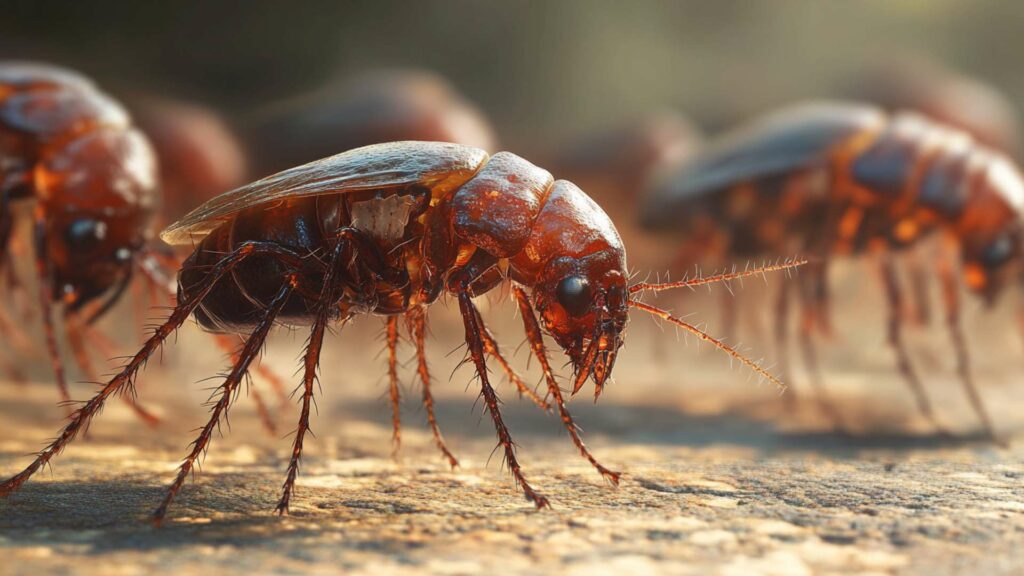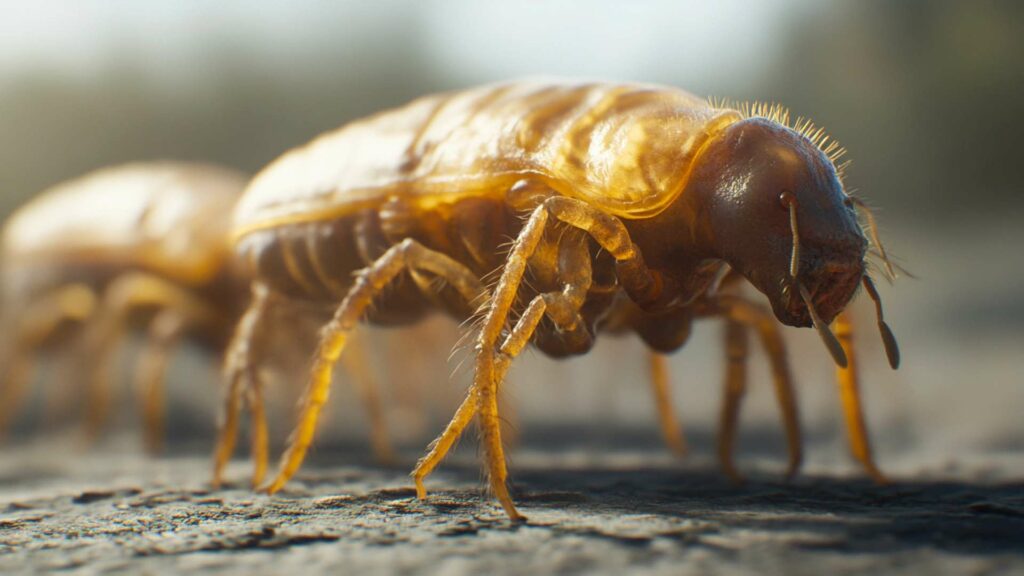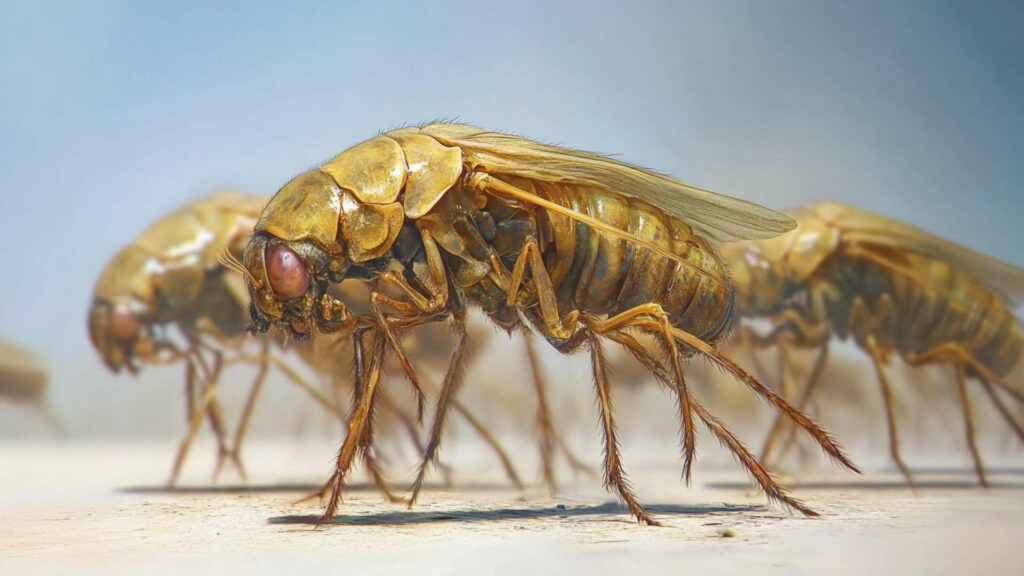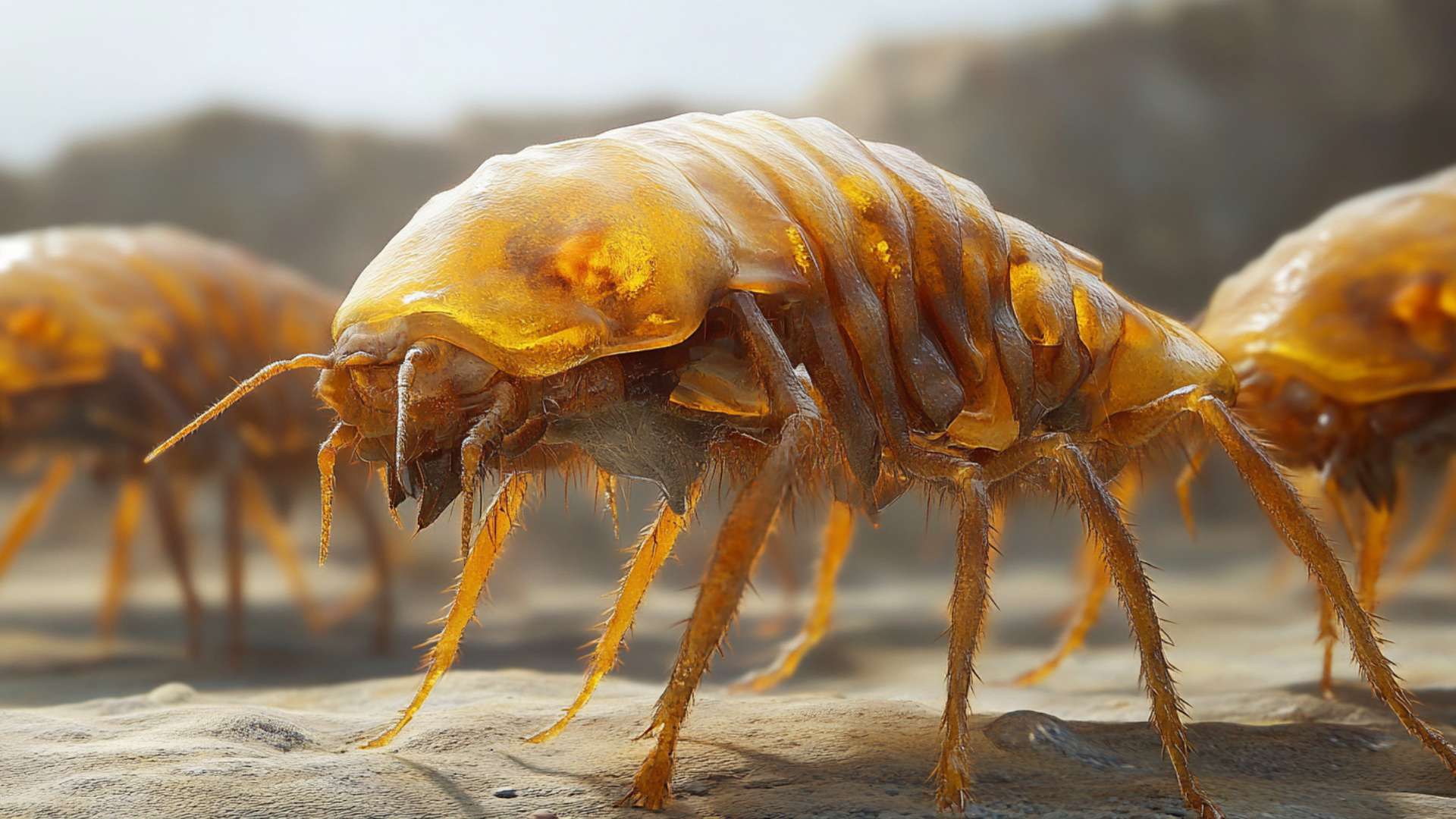Fleas, those tiny parasitic insects, can be a real nuisance for both humans and animals. These pesky creatures survive by feeding on the blood of warm-blooded hosts, such as cats, dogs, and even humans.
Flea bites can cause intense itching and discomfort, often resulting in red bumps or welts on the skin. Unlike mosquito bites that tend to be more random and scattered, flea bites usually appear in small clusters or lines.
Importance of protecting oneself from flea bites

Protecting oneself from flea bites is crucial for several reasons. Firstly, these itchy bites can drive you crazy with incessant scratching. Not only that, but excessive scratching may lead to skin infections if the area where bites itch becomes broken or irritated.
Secondly, fleas are known carriers of diseases and parasites like tapeworms. Therefore, preventing flea bites not only saves you from unnecessary discomfort but also lowers the risk of potential health problems.
If you have pets at home, it becomes even more critical to protect yourself since fleas may hitch a ride indoors through your furry companions. A single bite might seem insignificant at first but remember that fleas multiply rapidly.
Delaying preventive measures could result in a full-blown flea infestation within just a few days. Moreover, some people are highly sensitive to flea saliva and may experience allergic reactions to their bites.
These individuals might develop severe itching or redness around the bite sites that lasts longer than usual. Therefore, everyone should take necessary precautions to prevent these tiny bloodsuckers from making us their feast.
In the upcoming sections of this article on how to protect yourself from flea bites, we will explore various preventive measures including home remedies and over-the-counter solutions for reducing flea bites itchiness and avoiding future encounters with these bothersome insects. So, let’s dive in and learn how to keep those flea bites at bay!
Description and Characteristics of Fleas
Fleas, those pesky little creatures that can turn our lives into an itchy nightmare, are tiny insects with a remarkable ability to jump long distances. Measuring just a few millimeters in length, fleas boast a flattened body shape that allows them to effortlessly move through the fur or feathers of their hosts. Their incredibly strong legs are designed for jumping, enabling them to propel themselves up to 150 times their own height.
These minuscule critters are usually reddish-brown or black in color, making them difficult to spot amidst the flurry of activity on our pets or in our homes. With their piercing mouthparts specifically adapted for bloodsucking, fleas bite humans and animals alike to feed on their warm-blooded hosts.
Life Cycle and Habits of Fleas
Understanding the life cycle of fleas is crucial when combating these persistent pests. A typical flea’s life consists of four stages: egg, larva, pupa, and adult. Once an adult female flea finds herself on a host—usually cats or dogs—she lays her eggs there.
These tiny white eggs are barely visible and tend to fall off the host onto carpets, bedding, or upholstery. Within a few days, these eggs hatch into larvae that resemble small whitish worms with bristles.
These larvae feed on organic matter such as skin cells and flea feces until they spin cocoons in which they develop into pupae. Pupae have protective cases around them that shield them from external threats while they undergo metamorphosis.
Once conditions are favorable (warm temperatures and vibrations indicating the presence of potential hosts), adult fleas emerge from their cocoons ready to jump onto any passing creature to begin feeding. The entire life cycle—from egg to adult—can range from as little as a few weeks to several months, depending on environmental factors.
Fleas are not just nuisance pests; they can transmit diseases and cause allergic reactions in both humans and pets. That’s why it’s crucial to understand their characteristics and life cycle to effectively tackle a flea infestation.
By knowing what we’re up against, we can implement preventative measures and combat these tiny foes head-on. So let’s dive into the next section on identifying flea infestations to ensure we stay one step ahead in this battle against the biting bugs!
Identifying Flea Infestations
Signs and Symptoms of Flea Infestations in Humans and Pets
Flea infestations can be a nuisance for both humans and their beloved pets. It’s important to be able to identify the signs of a flea infestation to take appropriate measures.
In humans, one of the most common signs is experiencing frequent, itchy bites on exposed skin. These bites often appear as small, red welts with a tiny dot in the center, resembling mosquito bites.
However, unlike mosquito bites that tend to fade quickly, flea bites may remain itchy for several days or even weeks. Pets also exhibit specific signs when infested with fleas.
Dogs and cats may frequently scratch themselves or bite at their fur excessively. As a result of scratching, you might notice hair loss or red patches on their skin.
Additionally, fleas can leave behind flea dirt (feces), which appears as small black specks on your pet’s fur or your pet’s bedding. You can easily check for flea dirt by combing through your pet’s coat with a fine-toothed comb onto a white sheet of paper.
Recognizing Flea Bites on the Skin

Recognizing flea bites is essential in identifying whether you are dealing with fleas or another insect problem. Flea bites typically occur in clusters or lines on areas where skin is exposed, such as ankles, legs, arms, and neck. They often have a red halo around them and provoke an intense itching sensation.
To alleviate discomfort caused by flea bites, avoid scratching them vigorously as this can lead to secondary skin infections. Instead, gently clean the affected area with mild soap and warm water to keep it clean and prevent infection.
Applying calamine lotion or using anti-itch creams containing ingredients like hydrocortisone can provide temporary relief from itching. Remember, flea bites may not be immediately evident for everyone, as some individuals do not exhibit visible signs of a reaction to stop flea bites.
However, if you suspect a flea infestation in your home or on your pets, it’s crucial to take proactive measures to eliminate these pesky pests and prevent further bites. In the next section, we will explore preventive measures to protect yourself from flea bites.
Preventive Measures for Flea Bites
Maintaining a Clean Living Environment

One of the most crucial steps in protecting yourself from flea bites is to maintain a clean living environment. Fleas can easily infest your home, hiding in carpets, furniture, and bedding. Regular vacuuming is essential to remove flea eggs and larvae from these areas.
Use a vacuum cleaner with strong suction power and make sure to reach all corners, crevices, and baseboards where fleas might hide. Focus on areas where pets spend most of their time as fleas are often found near their sleeping spots.
In addition to regular vacuuming, it’s important to clean your carpets, furniture, and bedding thoroughly. Wash them with warm water using appropriate cleaning agents that are effective against fleas.
If possible, use hot water for laundering as it helps kill the hidden fleas and their larvae. Pay special attention when cleaning your pet’s bedding as this is often a hotspot for flea infestations.
Protecting Pets from Fleas

Pets are common carriers of fleas into our homes; therefore, protecting them from these pesky parasites is crucial in preventing flea bites for both humans and animals alike. Regular grooming and bathing using flea-repellent products are key preventive measures. Grooming your pets regularly not only keeps them clean but also helps you spot any signs of your pet having a flea infestation early on.
Comb your pet’s fur with a fine-toothed flea comb regularly to catch any adult fleas or their eggs before they have a chance to multiply. Bathing your pets with specially formulated shampoos or soaps that repel fleas can help keep these parasites at bay.
Consult your veterinarian to choose the right product for your pet’s particular needs as some over-the-counter products may not be effective or safe. Using veterinarian-recommended flea preventatives is an essential step in protecting your pets.
These products come in various forms like topical treatments, collars, or oral medications, and are designed to kill fleas or prevent their infestation altogether. Remember to follow the instructions carefully for maximum effectiveness.
By maintaining a clean living environment and ensuring your pets are free from fleas, you significantly reduce the chances of flea bites on both yourself and your furry friends. Overall, taking these preventive measures will create an environment that is unfavorable for fleas to thrive and minimize any risks of flea bites.
However, it’s important to remember that even with diligent efforts, occasional encounters with these persistent parasites may still occur. In such cases, it’s helpful to know some home remedies and treatments to alleviate the discomfort caused by flea bites.
Personal Protection Strategies
Dress Smart: Minimize Exposure to Fleas
Picture this: you’re ready to venture outdoors on a sunny day, but those pesky fleas are out and about too. Fear not! By dressing appropriately, you can shield yourself from their itchy wrath.
When strolling through flea-infested areas, opt for long sleeves, pants, socks, and closed-toe shoes. These simple garments act as a barrier between your skin and those persistent pests.
Tuck It In: Keeping Fleas at Bay
Fleas are crafty little creatures that can crawl up your legs unnoticed – unless you take preventive measures. Tucking your pants into your socks may not be the most fashionable choice, but it’s an effective one. By sealing off any potential flea entry points, you’ll greatly reduce the risk of them hitching a ride on your lower body.
Beware of the Bite: Applying Insect Repellents
When it comes to repelling fleas effectively, insect repellents are your trusted allies. Look for products containing DEET or picaridin as these ingredients have proven efficacy against fleas. Before stepping outside into flea-populated territory, apply these repellents generously onto exposed skin surfaces for maximum protection.
Avoiding Flea Frenzy: Protecting Your Skin
As temperatures rise during humid weather conditions, so does the likelihood of encountering fleas. To shield yourself from their bites in such situations, make sure to cover any exposed areas with insect repellent or clothing as an added layer of defense against these wingless insects.
By following these personal protection strategies diligently, you can enjoy outdoor activities without fretting over pesky flea bites ruining the fun. Remember that prevention is key when dealing with fleas—it’s far easier to repel them than to deal with the aftermath of their bites.
So, suit up in your long sleeves and pants, tuck your pants into your socks, apply insect repellent, and rest easy knowing you’ve taken the necessary steps to keep those fleas at bay. Stay vigilant and enjoy the great outdoors without worrying about those tiny pests!
Home Remedies for Flea Bite Relief
Natural remedies to soothe itching and reduce inflammation
Flea bites can be quite itchy and irritating, causing discomfort and frustration. Thankfully, there are several natural remedies that can help you prevent flea bites, alleviate the itchiness, and reduce inflammation caused by these pesky pests. By utilizing these simple yet effective home remedies, you can find relief from flea bites without resorting to harsh chemicals or medications.
One popular remedy is using cool compresses made from chamomile tea or ice packs. Chamomile tea has natural anti-inflammatory properties that can help soothe the irritation caused by flea bites.
Brew a cup of chamomile tea, let it cool down, then soak a clean cloth in the liquid and place it on the affected areas for 10-15 minutes. Alternatively, you can place ice packs wrapped in a thin towel on the bites for short intervals to numb the area and reduce swelling.
Application of aloe vera gel or diluted apple cider vinegar on affected areas
Aloe vera gel is renowned for its soothing properties and can provide much-needed relief from flea bites. Extract fresh gel from an aloe vera leaf or purchase pure aloe vera gel from your local store.
Apply a small amount of the gel directly onto the bite marks and gently massage it into the skin. Aloe vera will not only help alleviate itching but also promote healing due to its antibacterial properties.
Diluted apple cider vinegar is another home remedy that may prove effective against flea bite irritation. Mix equal parts of apple cider vinegar with water in a spray bottle or bowl.
Dip a cotton ball into this solution and gently dab it onto the affected areas of your skin. The acidity of apple cider vinegar helps restore pH balance, reducing itchiness while preventing any secondary infections that may occur due to scratching.
Medical Treatment for Flea Bites
While prevention is crucial, sometimes flea bites are unavoidable. If you find yourself dealing with itchy skin and uncomfortable flea bites, there are several medical treatments that can provide relief.
Over-the-Counter Remedies
You can find a variety of over-the-counter remedies to treat flea bites. One popular option besides flea shampoo is an anti-itch cream or lotion containing ingredients such as hydrocortisone or calamine.
These products help relieve itching and reduce inflammation caused by the bites. Additionally, applying a cold compress made from a mixture of equal parts lemon juice and warm water can provide temporary relief.
Pain Relievers
If you experience pain along with the itching, taking over-the-counter pain relievers like ibuprofen or acetaminophen can help alleviate discomfort and prevent bites. These medications work by reducing pain and inflammation at the site of the bite.
Prescription Medications
In severe cases where flea bites lead to allergic reactions or intense itching, your healthcare provider may prescribe stronger medications like corticosteroid creams or oral antihistamines. These medications can effectively reduce inflammation, swelling, and itching caused by allergic reactions to flea bites.
Conclusion
Flea bites may be an annoyance, but with proper preventive measures and prompt treatment, you can protect your pet and yourself from these pesky insects. By maintaining cleanliness in your surroundings and implementing protection strategies for both yourself and your pets, you significantly decrease the chances of encountering fleas in your living environment.
If you do get bitten by fleas recently, remember that there are various medical treatments available to ease the discomfort. Over-the-counter remedies like anti-itch creams or lotions can provide immediate relief, while pain relievers help alleviate pain and inflammation.
In severe cases, consult your healthcare provider for prescription medications that can effectively combat allergic reactions and intense itching. With a comprehensive approach to flea prevention and proper treatment protocols for flea bites, you’ll be able to enjoy a flea-free life.
So, don’t let these tiny creatures dampen your spirits. Take charge of the situation, protect yourself, and bid farewell to these bothersome biters!
Exterminate Fleas with D-Termination: The Leading Pest Control Service in Las Vegas!

If you’re contending with flea issues on your Las Vegas property, don’t worry—D-Termination is here to assist you. Our proficient team is dedicated to eradicating flea infestations and bringing back comfort and serenity to your living space. Say your farewells to fleas by opting for D-Termination’s reliable pest control today!
Get in touch with us at 702-919-6310 or visit dtermination.com to schedule your flea control service and reclaim your space from these bothersome pests.
Frequently Asked Questions:
To prevent flea bites, use flea repellents, keep your environment clean, and treat your pets for fleas.
Certain foods, like garlic and apple cider vinegar, are said to help repel fleas when consumed, but their effectiveness varies.
Fleas are attracted to human body heat, carbon dioxide, and skin odors.
To make flea bites less noticeable, you can apply anti-itch creams, use cold compresses, or cover them with makeup if needed.








